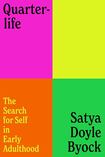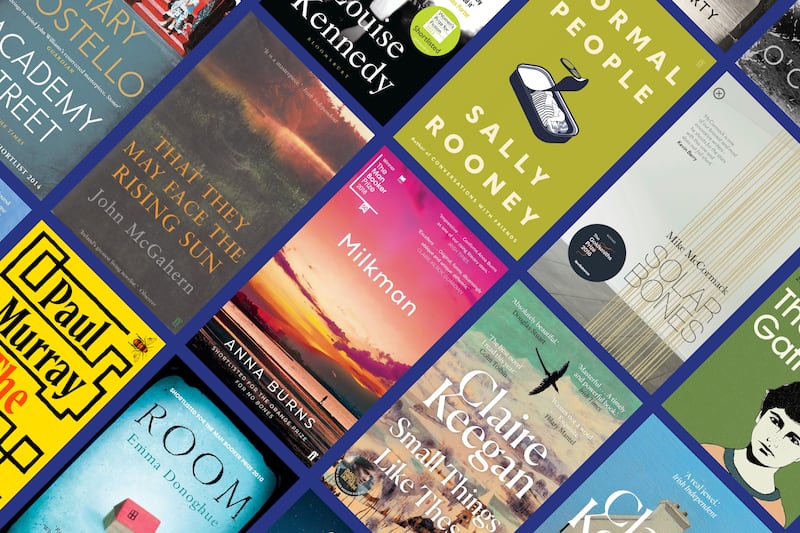
Directionless and stuck in a job she hated during what were supposed to be “the best years” of her life, the younger self of writer and psychotherapist Satya Doyle Byock knew instinctively that something was missing. Paralysed by a crisis of meaning, despite having just landed her first well-paid job at a tech start-up, the young graduate struggled to make sense of her experience until she read Carl Jung’s Memories, Dreams, Reflections.
“When [Jung] wrote about the necessity to find and live one’s own life, I felt validated in my endless questioning and my search for more,” she writes in her new book, Quarterlife: The Search for Self in Early Adulthood.
In highlighting one of our culture’s most insidious myths, she reveals her knack for elegant prose: the belief that “adulthood arrives when you finally reach certain markers of economic and relational security, as if those achievements will magically pull you out of the lobby of your suffering and into the grand hall of ‘real life’.” Doyle Byock’s younger quest for “more” had little to do with external success and everything to do with the pursuit of “wholeness” – one which some Boomers are likely to dismiss with an eyeroll and a pejorative jab at Millennials or Gen Zers for being overly romantic.
Adulthood, from Doyle Byock’s perspective, should not be measured by a person’s successes or failures, but rather by the degree to which an individual knows themselves and can lead a life in harmony with their innermost values. Quite frankly, though, I have a sense that the therapist would recoil from the very idea of measuring a person’s adulthood, since it implies a set of achievements for which the quarterlifer is solely responsible. In reality, she argues, the journey to becoming a “whole” adult is often constrained by “structural issues that are completely outside of [the quarterlifer’s] control”, such as poverty, crippling student loan debt, war, immigration bureaucracy, gun violence, and, of course, the climate crisis.
As a quarterlifer myself, I can say with some conviction that Doyle Byock’s younger self – the one who longs for ‘more’ – was not an anomaly
Within this broader socio-political context, I get the sense that Doyle Byock has a soft spot for the nonconformist. She admires the individual who “no longer makes decisions solely in deference to an authority” and is unafraid to rattle the cage a little, provided they do so not merely for the sake of it, but with thoughtful “discernment, self-knowledge, and self-respect”.
As a quarterlifer myself, I can say with some conviction that Doyle Byock’s younger self – the one who longs for “more” – was not an anomaly. Fellow readers existing in that in-between space of childhood and adulthood will recognise the liminal purgatory to which both she and her client case studies – Grace, Mira, Conner, and Danny – were once consigned. This is the purgatory that comes with having failed to satisfy our society’s definition of a proper “grown-up”, or else, having satisfied it so perfectly that they wake up one morning to realise they are wholly alienated from their real self.
The beauty of Doyle Byock’s book lies in how it gives language and legitimacy to internal crises that we tend only to associate with midlife, conceptualising them in terms of that timeless push-pull between meaning and stability. In classic Jungian style, Doyle Byock draws on ancient mythology and even popular culture (though references to Star Wars, The Crown and Harry Potter may seem somewhat out of place) in illustrating the quarterlifer’s heroic struggle to integrate both meaning and stability into a harmonious self. She suggests that each of us can be classified as either a “meaning type” or a “stability type,” and “often what each type knows... is what the other type needs for wholeness”.
The “meaning type” comes to life through Grace, a queer waitress with pink lipstick, tattoos and a “jagged pixie cut of bleached hair”, who stays up until early in the morning and longs to be free of arbitrary social norms and injustices. The irony is that, while she sees adulthood as the place “where souls go to die or something,” she craves the structure and containment of her more ostensibly “adult” partner.
While beautiful in its simplicity, the tidy separation of meaning and stability types may not resonate with the reader who, like me, discovers that they are a messy, poorly differentiated mixture of both
The “stability type”, on the other hand, is almost instantly recognisable: Mira is the 31-year-old, successful, married lawyer who dresses in greys and blacks and is secretly haunted by the feeling that she is “about to go crazy.”
[ Group therapy: How to learn about yourself in the company of strangersOpens in new window ]
While beautiful in its simplicity, the tidy separation of meaning and stability types may not resonate with the reader who, like me, discovers that they are a messy, poorly differentiated mixture of both. The transformative stories of her four case studies, though deftly and compassionately evoked, also feel a little too neat at times: these deeply conflicted individuals appear to “separate from their pasts, listen to themselves, build their lives in quarterlife, and integrate stability and meaning” in a satisfying narrative arc from crisis to resolution.
Certainly, there are times when the reader may have to set aside their scientifically minded, rational voice, as when the therapist invites us to listen to the deeper rumblings of our instinctual selves or when she theorises that meaning and stability types are inherently drawn to one another. (Apparently, this applies to the sibling pairs within the British royal family.)
And if you can forgive her occasional use of ideological jargon, such as “stifling gender roles of heteronormative patriarchy” and “economic and social abuses of white supremacy” – tongue twisters that seem to signify everything and nothing all at once – then I think you’ll find Quarterlife a treat. It is a compassionate, incisive and artfully crafted roadmap to navigating one of the most turbulent and poorly signposted chapters of life.













